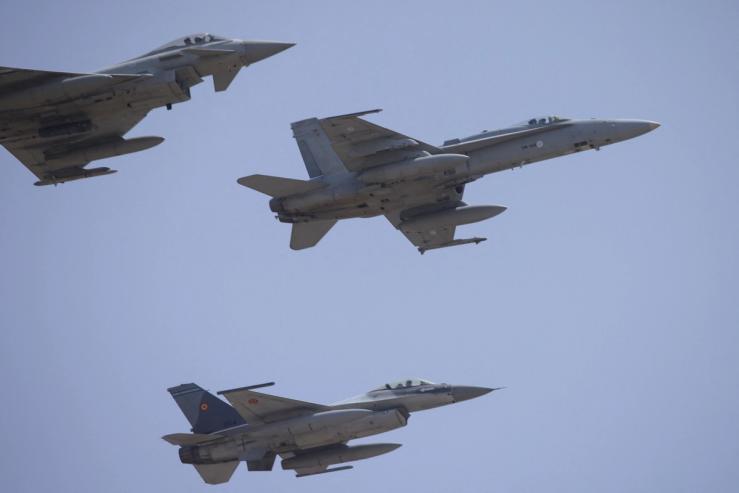The News
A growing number of NATO countries are looking to increase the alliance’s flagship target for all members to spend 2% of their GDP on defense in the face of the growing Russian threat on the alliance’s Eastern flank.
However, they concede that such a commitment — which comes as many member states are coming to the conclusion that they will need to ramp up their defense spending — looks out of reach at this week’s summit in Washington.
“We are starting to see a move towards a new pledge at the Hague summit,” the Estonian Undersecretary for Defense Policy Tuuli Duneton told Semafor, referring to the alliance’s planned 2025 meeting. “We would like to see 2.5 or 3%.”
While US and European officials have been saying for months that bumping the defense pledge is not on the agenda for this week’s Washington summit, “more and more defense ministers are saying that 2% is not enough,” Duneton said.
Estonia is the alliance’s second-largest spender on defense by share of GDP, and the Baltic nation has long pushed the alliance to do more. But a growing number of European countries that have hit the 2% minimum also appear eager to restart one of the most contentious debates in the alliance.
Poland’s President Andrej Duda has called for raising the target to 3%; British and Latvian officials have spoken publicly to their desire for a more ambitious figure, and senior EU officials have said similar conversations are going on behind closed doors.
“We are pushing everyday to go beyond the 2% at the minimum,” a European official told Semafor, adding that the current target was “not enough given the security environment.”
While 23 out of 32 members are expected to hit the target this year, NATO chief Jens Stoltenberg has insisted that “we must go further.”
One senior NATO official told a briefing Tuesday that he was hard pressed to think of an ally that would not need to spend more in the coming years — with the possible exception of Poland, which is expected to spend over 4% of its GDP on defense this year. “We need more mass, we need more stuff, we need more modernization,” he said. “Privately, everybody would agree that everybody’s going to have to go above 2%.”
Know More
The spending question has taken on higher stakes after the US’s presumptive Republican nominee for president, Donald Trump, said he would encourage Russia to “do whatever the hell they want” to any NATO member that was not paying its fair share, a threat he reiterated in the presidential debate in June. Several former Trump administration officials have put forth a plan for a two-tiered NATO, whereby countries not hitting the 2% target would not be protected by the US.
One European official told Semafor that “informal discussions” on increasing the alliance’s defense spending have already begun. “I definitely see it on the agenda,” the official said, adding that this conversation could ramp up after the US election.
Even so, increasing the target would be politically contentious when almost a third of the NATO members are yet to hit the existing 2% target, which the alliance had committed to hit by this year.
Some officials and experts have questioned the value of ramping up the figure, arguing that the metric fails to capture key parts of the alliance’s burden sharing.
“It’s a bit arbitrary,” Norway’s Foreign Minister Espen Barth Eide told Semafor, noting that benchmarking defense targets to a country’s GDP had sometimes led to drastic fluctuations depending on economic performance. As well as ensuring members spend enough, he said, there is also a need to make sure that money is well spent.
“Everyone in the alliance sees the increases of the past couple of years as a huge accomplishment, almost everyone recognizes that reliable deterrence will require a bit more, and virtually no one wants to spoil the unity of the summit with a politically divisive debate on a firm new target,” Stephen Sestanovich, a senior fellow at the Council on Foreign Relations, told Semafor.
Notable
- NATO’s spending targets don’t paint the full picture, Semafor wrote in April.
- Canada, long one of the alliance’s biggest laggards, will soon share a “credible” plan to meet the alliance’s targets.


